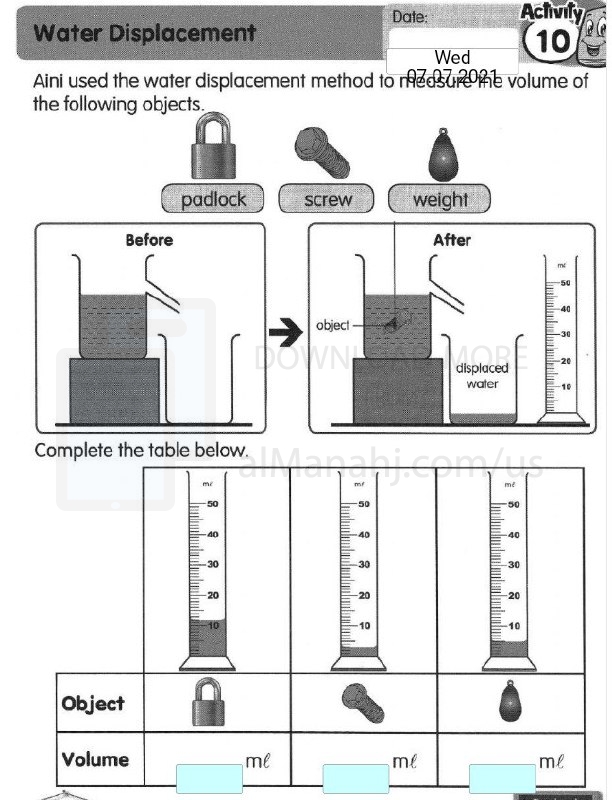File info: A Worksheet about Standard Units of Measurement and Volume is an educational resource that focuses on teaching students about the fundamental units of measurement used in various fields of science and everyday life, as well as the concept of volume. This worksheet typically includes activities and exercises that engage students in learning about different standard units of measurement, such as length, mass, and volume, and how to convert between them. The purpose of the worksheet is to provide students with an opportunity to explore and deepen their understanding of measurement and volume concepts. Here's a description of what a Worksheet about Standard Units of Measurement and Volume might include:
1. Unit Identification: The worksheet may include a section where students are presented with different quantities and are asked to identify the appropriate unit of measurement for each. For example, they may need to match lengths with units such as meters, centimeters, or kilometers, or match masses with units such as grams or kilograms. This activity helps students become familiar with common units of measurement and understand which unit is most appropriate for a given quantity.
2. Conversion Practice: This section may include exercises where students are required to convert between different units of measurement. They may be given conversion factors or formulas and asked to convert measurements from one unit to another. For instance, students may need to convert meters to centimeters, grams to kilograms, or liters to milliliters. This activity helps students develop skills in unit conversion and reinforces their understanding of the relationship between different units within a measurement system.
3. Volume Calculations: The worksheet may include problems that focus specifically on volume calculations. Students may be given measurements of length, width, and height and asked to calculate the volume of various shapes, such as rectangular prisms or cylinders. They may also be presented with real-life scenarios where they need to determine the volume of containers or objects. This activity helps students grasp the concept of volume and apply relevant formulas to calculate the amount of space occupied by an object or substance.
4. Word Problems: This section may present students with word problems that require them to apply their knowledge of standard units of measurement and volume in practical situations. The problems may involve scenarios such as measuring ingredients for a recipe, calculating the volume of liquids in containers of different shapes, or determining the volume of objects for packaging purposes. This activity encourages students to apply their understanding of measurement concepts to real-life contexts and develop problem-solving skills.
5. Critical Thinking and Reflection: The worksheet may include critical thinking questions or reflection prompts that encourage students to analyze and evaluate measurement concepts. For example, they may be asked to explain why it is important to use standard units of measurement in scientific investigations or to discuss the challenges and limitations of measuring volume in irregularly shaped objects. These activities promote higher-level thinking and encourage students to reflect on the practical applications and implications of measurement principles.
6. Answer Key: The worksheet provides an answer key that includes the correct answers or solutions for each activity or question. This allows students to self-assess their work, check their answers, and address any misconceptions they may have.
The purpose of a Worksheet about Standard Units of Measurement and Volume is to engage students in exploring and understanding the fundamental units of measurement and the concept of volume. By participating in various activities and exercises, students develop a foundational understanding of measurement principles and the practical application of units in everyday life and scientific contexts. |
